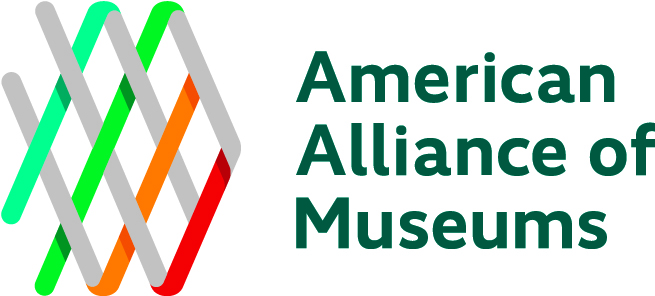By Gail Ravnitzky Silberglied
For years, museums have demonstrated their public value as educational providers, community anchors and stewards of our national heritage. They’ve also earned a reputation for driving tourism, creating jobs, and attracting businesses to the community.
But health care?
 A new report by the American Alliance of Museums intends to shift public perceptions about what museums do. Museums On Call: How Museums Are Addressing Health Issues outlines 10 important ways that museums are contributing to health care.
A new report by the American Alliance of Museums intends to shift public perceptions about what museums do. Museums On Call: How Museums Are Addressing Health Issues outlines 10 important ways that museums are contributing to health care.
Seriously, how many people can say that they knew museums were working in all of these areas?
- Alzheimer’s disease
- Autism
- Disease prevention
- Health literacy
- Hospital outreach
- Medical training
- Mental health
- Military and veterans health
- Nutrition and wellness
- Visual impairment
And even if you personally were already aware of this kind of work, it is likely that your elected officials are not.
At a time when lawmakers are considering rolling back the charitable deduction, questioning whether funding for museums is a core federal responsibility, and voting to cut in half (or eliminate) funding for NEA and NEH, our field must speak up—with a unified voice—about the essential work of museums.
That may take the form of making the case that your museum is an economic engine. Or that your museum serves as a location for supervised visits through the family court system or offers English as a Second Language classes. If your museum is addressing health issues, this is a powerful story to tell to your elected officials (and we want to know about it, too!).
Kudos to these Western museums (and the many others) that are addressing important health issues in their communities.
- The Northwest African American Museum in Seattle held an exhibit called Checking Our Pulse: Health and Healers in the African American Community, that highlighted five health issues that disproportionately affect the African American community: heart disease, diabetes, HIV/AIDS, mother and infant issues and breast cancer.
- Children’s Museum of Phoenix partners with Arizona State University’s College of Nursing and Health Innovation to bring nursing students to the museum. Student nurses offer fun and interactive health programs for children at the museum while becoming comfortable working with young children and their families.
- Science Factory Children’s Museum in Eugene, Oregon, hosted a whooping cough booster shot clinic for adults in partnership with Lane County Public Health, which was bracing for a summer outbreak.
- The Arizona Science Center in Phoenix has a National Institutes of Health/Science Education Partnership Award-funded project in which middle school students replicate a computer sorting massive amounts of data and identifying disease patterns to determine appropriate cancer treatment. The museum also offers visitors the chance to be “Disease Detectives” and has several stage presentations encouraging audience involvement in fighting microbes and viruses.
- The Tucson Museum of Art brings art-making projects to critically ill children at the University of Arizona Medical Center. While dealing with their illness or disability in an unfamiliar environment, children explore and express their feelings, discover ways of working in the visual arts and engage in therapeutic social interaction.
- The Oregon Museum of Science and Industry in Portland features an exhibit, Dangerous Decibels, which includes a 10-foot-tall, walk-through ear. The exhibit was specifically suggested by focus groups of students in sixth through eighth grades to educate about hearing loss and was funded in part by a National Institutes of Health/Science Education Partnership Award. Visitors can activate a sound source and observe how the parts of the ear work together with the brain to enable us to hear. They can also test their hearing using an interactive computer game.
- The Arizona State Museum in Tucson worked with the University of Arizona College of Public Health to develop a creative way to talk to teenagers about obesity: they wrote a comic book with an interactive website and mobile app, available in Tohono O’odham, Spanish and English. The museum’s director of education, Lisa Falk, notes that approximately 50 percent of the Tohono O’odham have diabetes. She believes the museum’s Through the Eyes of the Eagle: Illustrating Healthy Living exhibit can play a role in reversing this epidemic.
Politicians are often eager to tell us how much they LOVE museums. But we mustn’t interpret these declarations of love for actual take-action-in-support-of-museums type of support. In order for lawmakers to spend precious federal funds on museums, they have to believe that museums are not just nice, but essential. They have to see them as directly addressing critical needs in the community, and Museums on Call is a critical piece of that message.
We intend to continue this drumbeat of relevance—and essentialness—on Capitol Hill. (You can help by telling your story as well, and Museums Advocacy Day 2014 is a great opportunity to do this.)
What is your museum doing that might surprise policymakers?
Gail Ravnitzky Silberglied is Vice President for Government Relations and Advocacy at the American Alliance of Museums. She served as a Congressional staff member for 11 years, and is the author of Speak Up for Museums: The AAM Guide to Advocacy. She was the principal author of the Museums On Call report.








Add new comment